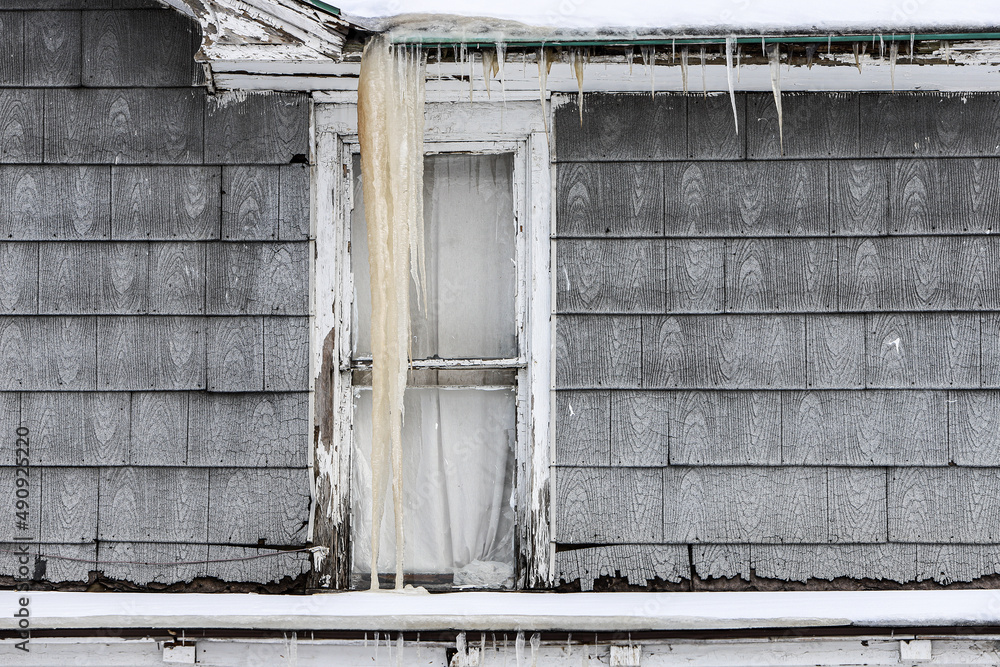Asbestos siding, a once-popular building material, has a storied history that intertwines with the evolution of construction practices over the decades. Originally celebrated for its durability and fire-resistant properties, asbestos siding became a staple in homes across the globe. However, as awareness of the health risks associated with asbestos exposure emerged, the material’s fame took a drastic turn, prompting a reevaluation of its usage in modern times.
This comprehensive exploration of asbestos siding delves into its historical significance, the perilous health implications linked to its installation and removal, and the regulations governing its safe handling. Further, we shall scrutinise the available alternatives, comparing their effectiveness and safety against this erstwhile champion of construction.
Overview of Asbestos Siding
Asbestos siding was a significant construction material in the mid-20th century, renowned for its durability and resistance to various environmental factors. This material was widely utilised in residential and commercial buildings, contributing to a unique architectural aesthetic while providing essential protective qualities. Its versatility made it a popular choice during a period where functionality and cost-effectiveness were paramount.
Asbestos siding was primarily composed of cement mixed with asbestos fibres, which imparted several advantageous properties. The material’s resistance to fire, moisture, and pests made it appealing to builders and homeowners. Additionally, its ability to hold paint well and its low maintenance requirements further enhanced its desirability, leading to widespread use across the United Kingdom and beyond. The following characteristics helped define its popularity in the construction sector:
Key Properties and Benefits of Asbestos Siding
The inherent properties of asbestos siding contributed significantly to its adoption in various construction projects. Notably, its durability and excellent insulation capabilities offered several benefits over other materials. The following list highlights these key advantages:
- Fire Resistance: Asbestos is naturally fire-resistant, which provides an added layer of safety to buildings.
- Moisture Protection: The material’s ability to resist moisture prevents issues such as rot and mould growth.
- Pest Resistance: Asbestos siding is less susceptible to damage from pests, including termites.
- Low Maintenance: The durability of asbestos siding reduces the need for frequent repairs or replacements.
- Cost-Effectiveness: Its long lifespan made it a financially viable option for many builders and homeowners.
The impact of asbestos siding cannot be overstated, especially when comparing it to alternative siding materials such as wood, vinyl, and fibre cement. Each type of siding comes with its own set of characteristics, but asbestos siding provided a unique mix of properties that appealed to many during its prime. A comparative analysis of these materials reveals distinct differences in performance and suitability:
Comparison with Other Siding Materials
A thorough examination of asbestos siding in relation to other common siding materials illustrates the varied benefits and limitations. The following table Artikels key comparisons based on factors such as durability, maintenance, and cost:
| Material | Durability | Maintenance | Cost |
|---|---|---|---|
| Asbestos Siding | High | Low | Moderate |
| Wood Siding | Medium | High | Moderate |
| Vinyl Siding | Medium to High | Low | Low |
| Fibre Cement Siding | High | Low | Moderate |
This table highlights that while asbestos siding offered exceptional durability and low maintenance, its eventual decline in popularity stemmed from health concerns associated with asbestos exposure. The historical context of its use remains essential in understanding the evolution of building materials in contemporary construction practices.
Health Risks Associated with Asbestos Siding

The installation and removal of asbestos siding pose significant health risks due to the hazardous nature of asbestos fibres. Asbestos exposure can lead to severe respiratory disorders and other life-threatening conditions. Understanding these risks is crucial for those involved in the handling of such materials, whether during construction, renovation, or demolition.
Asbestos fibres, when disturbed, can become airborne and be inhaled, leading to a range of illnesses. First and foremost, it’s essential to be aware of the classic symptoms associated with asbestos-related diseases. Individuals exposed to asbestos may not experience symptoms immediately; however, over time, they can develop serious health issues, such as asbestosis, lung cancer, and mesothelioma. The latency period for these diseases can span decades, making early detection challenging.
Symptoms of Asbestos-Related Diseases, Asbestos siding
The manifestation of asbestos-related diseases can be insidious, often presenting symptoms only after prolonged exposure. Here are some prevalent symptoms associated with these conditions:
- Shortness of breath, which may worsen over time.
- Persistent cough that may be dry or produce mucus.
- Chest pain, particularly when breathing deeply or coughing.
- Fatigue and unexplained weight loss.
- Clubbing of fingers and toes, indicating a lack of oxygen in the blood.
It is imperative for individuals with a history of asbestos exposure to seek regular medical check-ups, as early diagnosis can dramatically improve outcomes.
Regulations and Guidelines for Handling Asbestos Siding
Due to the serious health risks posed by asbestos, stringent regulations and guidelines have been established to govern its handling. These regulations aim to protect both workers and the general public from the harmful effects of asbestos exposure. Key regulations include:
- The Control of Asbestos Regulations 2012 (UK), which Artikels the responsibilities of employers and employees regarding the management and removal of asbestos.
- Health and Safety Executive (HSE) guidelines, which provide clear protocols for identifying, assessing, and managing asbestos-containing materials.
- Local authority guidelines that dictate the safe disposal of asbestos waste to prevent environmental contamination.
Adhering to these regulations is critical for ensuring safety during the installation or removal of asbestos siding. Workers involved in such activities must be equipped with appropriate personal protective equipment (PPE) and receive training on safe handling practices.
Proper training and adherence to regulatory guidelines significantly reduce the risk of asbestos exposure during installation and removal processes.
Failure to comply with these regulations not only jeopardises health but can also lead to substantial legal repercussions for companies and individuals involved in asbestos handling. Thus, understanding and following established protocols is paramount in mitigating the associated health risks of asbestos siding.
Asbestos Siding Removal and Replacement

The process of removing and replacing asbestos siding is not only a significant home improvement task but also a critical one for the safety and health of the occupants. Given the hazardous nature of asbestos, adherence to strict guidelines is paramount to ensure a safe and effective removal process. Below are Artikeld procedures, a checklist for homeowners, and methods for disposing of the asbestos materials properly.
Procedures for Safely Removing Asbestos Siding
The safe removal of asbestos siding requires meticulous planning and execution. The following procedures should be adhered to:
1. Assessment: Conduct a thorough inspection of the siding to evaluate the condition of the asbestos material. If damaged or deteriorating, it may pose a higher risk and require immediate attention.
2. Notification: Inform relevant local authorities about your intent to remove asbestos siding, as some jurisdictions necessitate permits and notifications for such activities.
3. Preparation:
– Select an appropriate date for removal, ideally during dry weather to prevent the release of fibres.
– Secure the area by closing off access to the site and using plastic sheeting to cover windows and doors, minimising dust spread.
4. Personal Protective Equipment (PPE): Ensure that all individuals involved wear proper PPE, including respirators, gloves, and suits to prevent exposure.
5. Removal: Carefully detach the siding using hand tools, avoiding power tools that could generate dust. Wetting down the siding prior to removal can help suppress airborne particles.
6. Sealing: Place the removed siding in heavy-duty plastic bags or containers that are labelled clearly to indicate asbestos content.
Checklist for Homeowners Planning to Replace Asbestos Siding
Homeowners must consider several factors when planning the replacement of asbestos siding. The following checklist encapsulates essential steps to ensure a smooth transition:
– ☐ Hire a Licensed Contractor: Ensure that the contractor is certified and experienced in handling asbestos-related work.
– ☐ Obtain Necessary Permits: Check local regulations and secure any required permits prior to commencement of work.
– ☐ Conduct a Risk Assessment: Evaluate the extent of asbestos presence and condition to determine the best course of action.
– ☐ Arrange for Temporary Accommodation: Plan for alternative housing during the removal process, especially if the work is extensive.
– ☐ Review Safe Disposal Options: Familiarise yourself with local disposal regulations for hazardous waste.
– ☐ Consider Replacement Materials: Research and select appropriate non-asbestos materials for siding replacement, ensuring they meet local building codes.
– ☐ Establish a Timeline: Develop a clear schedule for the removal and replacement processes to manage time effectively.
Methods of Properly Disposing of Asbestos Siding Materials
Proper disposal of asbestos siding is crucial to prevent environmental contamination and health risks. The following methods should be employed:
1. Designated Disposal Sites: Asbestos waste must be taken to facilities specifically equipped to handle hazardous materials. Contact local waste management authorities to identify approved disposal sites.
2. Double-Bagging: Sealed heavy-duty plastic bags should be used for containment. Ensure that bags are securely closed and labelled to indicate asbestos content.
3. Transport Protocols: When transporting asbestos materials, use covered vehicles to prevent spillage and airborne contamination. Adhere to local regulations regarding transport of hazardous waste.
4. Documentation: Keep records of the disposal process, including receipts from disposal sites, to ensure compliance with local laws and regulations.
It is imperative to treat all asbestos materials with the utmost caution, ensuring that safety protocols are strictly followed throughout the removal and disposal processes.
Alternatives to Asbestos Siding

Asbestos siding was once a popular choice for many homeowners due to its durability and resistance to the elements. However, due to the significant health risks associated with asbestos, modern alternatives have emerged that provide similar protective qualities without the associated dangers. This discussion will explore contemporary siding options, including vinyl and fibre cement, which have become the preferred choices in today’s housing market.
Vinyl and fibre cement siding are two of the most common alternatives to asbestos siding. Both materials offer numerous benefits in terms of cost-effectiveness and longevity. Vinyl siding is known for its low maintenance requirements and affordability, while fibre cement is celebrated for its durability and aesthetic appeal. These materials not only enhance the exterior of homes but also contribute to energy efficiency and overall property value.
Comparison of Siding Materials
Understanding the pros and cons of alternative siding materials is essential for making informed decisions about home renovations. The following table Artikels the key attributes of vinyl and fibre cement siding compared to traditional asbestos siding.
| Material | Pros | Cons |
|---|---|---|
| Vinyl Siding |
|
|
| Fibre Cement Siding |
|
|
| Asbestos Siding |
|
|
In summary, while asbestos siding provided certain benefits in its time, the modern alternatives of vinyl and fibre cement siding offer enhanced safety and environmental considerations alongside their durability and aesthetic qualities.
When discussing building materials, one cannot overlook the significance of what is asbestos , a naturally occurring fibrous mineral known for its heat resistance. Among its various applications, asbestos insulation has been particularly noted for its effectiveness in minimising heat loss in structures, although it has since been phased out due to health concerns associated with its fibres.
Understanding the dangers of what is asbestos is crucial, particularly in older buildings where asbestos insulation may still be present. This mineral, while once lauded for its insulating properties, poses significant health risks, necessitating careful management and remediation in contemporary construction practices.